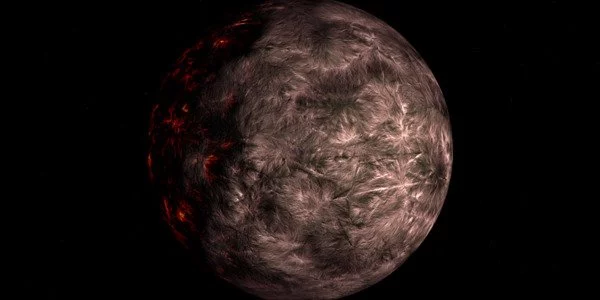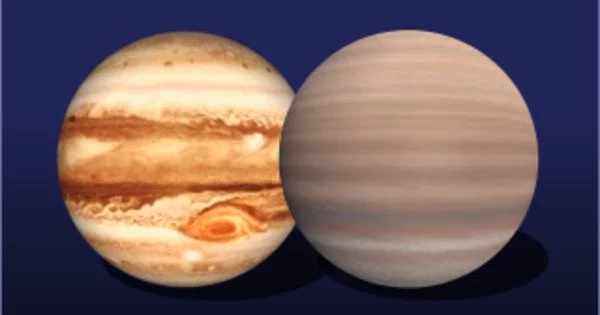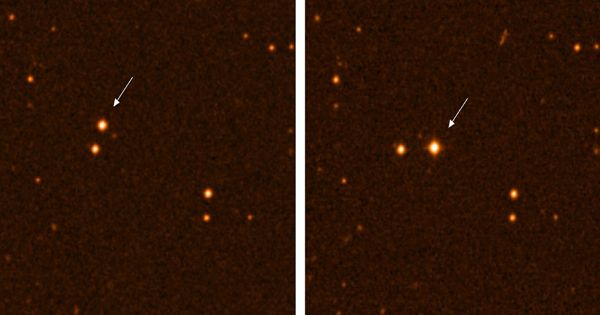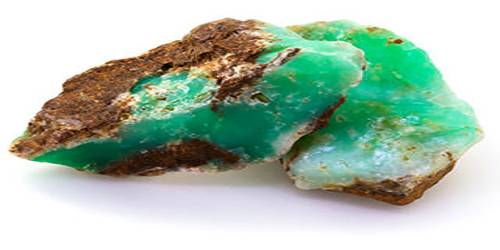38 Virginis b is a super-Jupiter exoplanet that orbits the star 38 Virginis in the constellation Virgo about 108.5 light-years (33.26 parsecs) from Earth. It has a mass of 2.3 Jupiters, takes 8.7 years to complete one orbit around its star, and is 3.3 AU away from it. The exoplanet was discovered using the radial velocity method, which involves measuring radial velocity and observing Doppler shifts in the spectrum of the planet’s parent star. It was discovered in 2011 and was announced.
Mass
38 Virginis b is a super-Jupiter or an exoplanet with a mass greater than Jupiter. It has a mass of at least 4.51 MJ. The semi-major axis is the distance between the planet and its star in its orbit. The Earth revolves around the Sun with a semi-major axis of slightly more than one A.U. The average distance between the Earth and the Sun is 1 A.U. The planet is closer to its star than Jupiter is to the Sun.

Host star
The planet revolves around the (F-type) star 38 Virginis. The star has a radius of about 1.46 R☉ and a mass of 1.18 M☉. It is approximately 1.9 billion years old and has a temperature of 6557 K. The Sun, on the other hand, is approximately 4.6 billion years old and has a temperature of 5778 K. The star has a metallicity ([Fe/H]) of 0.16, or 117 percent of the solar amount. It has 3.48 times the luminosity (L☉) of the Sun.
The apparent magnitude of the star, or how bright it appears from Earth, is 6.11. As a result, 38 Virginis is almost invisible to the naked eye, but it can be seen clearly with binoculars.
Orbit
38 Virginis b orbits its star every 825 days at a distance of 1.82 AU (which is comparable to Mars’ orbital distance from the Sun, which is 1.53 AU). Because its effective temperature is close to that of the Earth, it likely receives 3% more sunlight from the Sun than the Earth does (in fact, only 3 degrees warmer).
A planet that orbits a star other than the Sun is known as an exoplanet. According to the most recent parallax records, the star is 106.76 light-years, or 32.73 parsecs away from Earth. The planet’s orbital period, or year, is 825.9 days, or 2.26 Earth years. By the time, the Earth has completed a full year, the planet will have completed 0.44 orbits of its star.
Discovery
The search for 38 Virginis b began when its host star was chosen as an ideal target for a planet search using the radial velocity method (in which the gravitational pull of a planet on its star is measured by observing the resulting Doppler shift), as stellar activity would not overly mask or mimic Doppler spectroscopy measurements. It was also confirmed that 38 Virginis is not a binary star or a rapidly rotating star, both of which are common false positives when looking for transiting planets. The analysis of the resulting data revealed that the radial velocity variations most likely indicated the presence of a planet. The net result was an estimate of a 4.52 MJ planetary companion orbiting the star at a distance of 1.82 AU with an eccentricity of 0.03.
The discovery of 38 Virginis b was reported in the online archive arXiv on August 29, 2016.
















